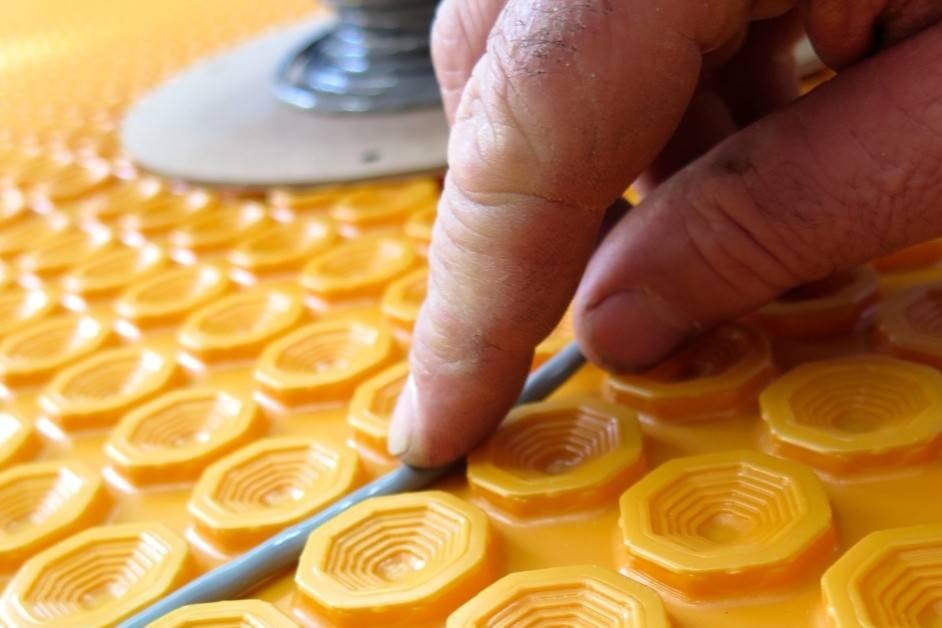Q: Will DITRA-HEAT electric infloor heating be enough to make my finished basement comfortable after ceramic tiles go down? I’m renovating a small basement for my daughter to use and perhaps later for myself. It’s about 400 square feet in all and I’d rather not install any non-infloor heating.
A: DITRA-HEAT is a plastic matt product that goes down first, and according to what I hear from the company, it can heat spaces on its own, but only if heat loss is minimal.
In my personal experience and the company’s recommendations I would include an additional heat source for your basement, perhaps directing some furnace ducts down into the space.
If this isn’t practical, then you could always plug in an electric heater or two for those times when it’s very cold outside and the floor heat isn’t quite enough. DITRA-HEAT DUO uses the same combination of uncoupling membrane and heating cables, but with a built-in thermal break on the bottom face to save energy.
Electricity is one of the most costly ways to heat any space, but the amount of heat involved in your case is tiny.
Comfortable Floors in Above-Garage Spaces
Q: How should I deal with the floor of the apartment I’m building over the three-bay garage at my daughter’s place? I’m getting conflicting advice from contractors. Some say infloor heating is not needed if insulation is installed within the floor. Others say electricity is too expensive for heating, while other say we’ll need infloor heating of some kind for sure to warm the floor. What do you suggest?
A: Both insulation and electric infloor heating are what you should install, and my recommendation comes from the experience of many Canadians who send me emails.
Every winter I hear from homeowners with bedrooms over garages and all these people complain about very cold feet, even if the floor is insulated. You can keep the room as hot as you want, but feet will still remain freezing if the floor is cold. The best way you can seal out drafts and boost insulation is with spray foam applied between the joists, underneath the floor. The new space will still have cold floors without some kind of infloor heating, too.
What size of apartment are you looking at creating? It’s probably not too large if it’s over a garage, and that’s important. Electricity is expensive, but you need to balance that with the complexity of other systems you could use instead and the small space you’re dealing with. The infloor heating should not be the only source of warmth, just the option you turn on when the floor is super cold. One way or the other, you’ll want to heat the floor. Even with floor insulation, you’ll need floor heat to be comfortable during the coldest weather.
Attic Insulation Upgrade
Q: We have 6” of pink insulation in the attic and want to add more in the form of batts. Would you recommend more of the same or something else?
A: Adding at least an additional 16î of insulation on top of what you’ve got will make a huge difference to your energy bills, and it’s what I’d shoot for. You can buy batts and lay them out up top, or rent a machine and blow in your own insulation. Both methods will yield the same good results. Place the batts tight to each other with no gaps (if that’s the route you go), but keep the insulation away from the eaves so the vents are not blocked. You want to preserve any existing air flow from the eaves into the attic space. As you work, be sure to preserve the opening of any ventilation baffles that may be present along the edge of the attic.
Steve Maxwell always finds that insulation is the most valuable part of an efficient home. Visit Steve online at BaileyLineRoad.com for free access to thousands of articles and videos covering Canadian home ownership.
